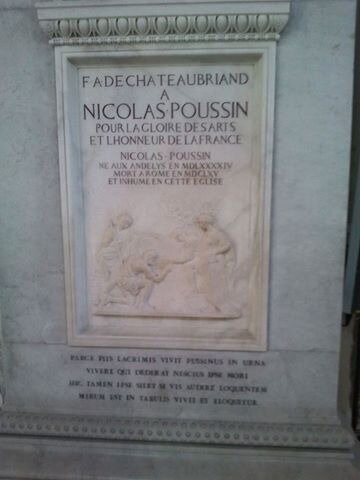


Today I will talk about one of the mysteries of Rome and the baroque culture, underlining you how many stories like that there are in the Eternal City. A place that is always able to astonish you...
Mainly in the Baroque age there were many ways, for the artists or the persons of letters, to be inspired by the ancient world. In this case I would like to tell you something about the Arcadia. What does it mean? It regarded a sort of earth utopia, inhabited by shepherds, who had no kind of concern: they were not to work, could spend the beautiful days to bask in the nature that surrounded them, with a land always fertile that needed to be worked out. This mythical zone would be in Greece, and was made famous, in painting, from the work of Guercino's Et in Arcadia Ego, followed by the homonymous painting of Poussin, an artist who was highly appreciated in Rome and in Europe, in the course of the XVII century. Mainly Virgil, the famous roman poet, wrote about the Arcadia taking place the events of his Bucoliche in this fantastic, perfect and utopian land. A locus amoenus, as the ancient Latin said, a place where people could live in a very calm and relaxing way. But why is the Arcadia link with Poussin and his funerary monument here at the Basilica of San Lorenzo in Lucina?
He was not just a painter, according to some records and literary sources, because it seems thaat he was also a lover of the games of words and messages that could be more or less esoteric, just like this. So now it's time to go to the Basilica of San Lorenzo in Lucina, a few steps from the central Via del Corso. Shortly after the entrance, on the right, you'll find a funerary monument, dedicated to Poussin. We see the shepherds, the protagonists of the land of Arcadia, and between them a cryptic message... Et in Arcadia Ego. What does Et in Arcadia Ego mean?
Premising that we are simply in front of a mystery, we must immediately note how the phrase, in Latin, is grammatically wrong. Indeed, there is no the verb to be, which usually goes at the end. Correctly, the sentence should be expressed with Et in Arcadia Ego sum (I am in Arcadia). What can mean all this? Both the Guercino, that the Poussin put some symbols of death, like human skulls in their works. The meaning, therefore, is simple: even in a land that is utopian and perfect like the Arcadia, the death can occur. The inevitability of life, in short, a theme so dear to the artists and european scholars of the ’600. But here is an another meaning, the most esoteric of all! Indeed, according to some, the phrase Et in Arcadia Ego sum hides something much bigger. For his work the words, we can come to this conclusion: Arcam tango Iesu, which means "Here is the tomb of Jesus"! In short, according to some Poussin would have resulted in the tomb (it is just the case to say) this secret, hiding it, however, in his famous phrase. And here, in front of his marble tomb located in the Basilica of San Lorenzo in Lucina (desired by the French poet Chateaubriand to celebrate Poussin), we find that the same sentence, half hidden between two shepherds. That's what this basilica in Rome hides, that's what a local tour guide like me wants to know: to share even the mysterious sides of the Eternal City.




